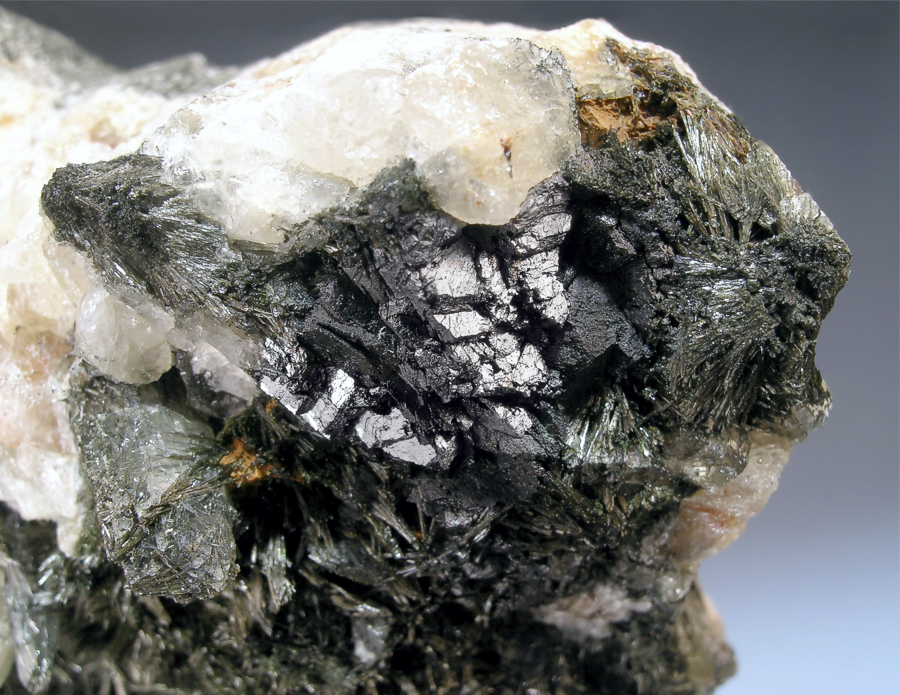 | near North Bend, King County, Washington, USA |
 |
GEOLOGY
Snoqualmie Batholith - late Oligocene to early Miocene (28 Ma[million years ago] to 22 Ma). Uplift and erosion of the Old Cascade Volcanic Arc exposed plutonic rock of the Snoqualmie Batholith near Snoqualmie Pass. Intrusive rock types found within the Snoqualmie Batholith range in composition from granite to gabbro. Granodiorite is the most prevalent exposed rock type. Other lithologies within the batholith include porphyritic dacite, andesite, aplite, and intrusive breccia (Livingston, 1971).
The deposit occurs in highly sericitized brecciated granodiorite of the Snoqualmie Batholith. The Bald Hornet Claim was recently sold to the State of Washington and is part of the Mount Si Natural Resource Conservation Area.
MINERALS
The Bald Hornet Claim is known for the rare tourmaline that was originally described as Luinaite-(OH). After reexamination, the tourmaline from the Bald Hornet Claim has been determined to be the triclinic dimorph of oxy-dravite (oxy-dravite-1A) (Bosi et al. 2022).
| Fe2+WO4 - Occurs as submetallic black blocky subhedral crystals in quartz and Oxy-dravite-1A matrix. | |
| HFeO2 - Occurs as coating on Oxy-dravite-1A and quartz. | |
| Na(Mg2Al)Al6(Si6O18)(BO3)3(OH)3O - Occurs as radial acicular sprays on quartz. | |
| SiO2 - Occurs as gemmy crystals in vugs. Japan-law twinned crystals are common. | |
| Sb2S3 - Occurs as lustrous elongated prismatic crystals to 4 cm. |
* photographed
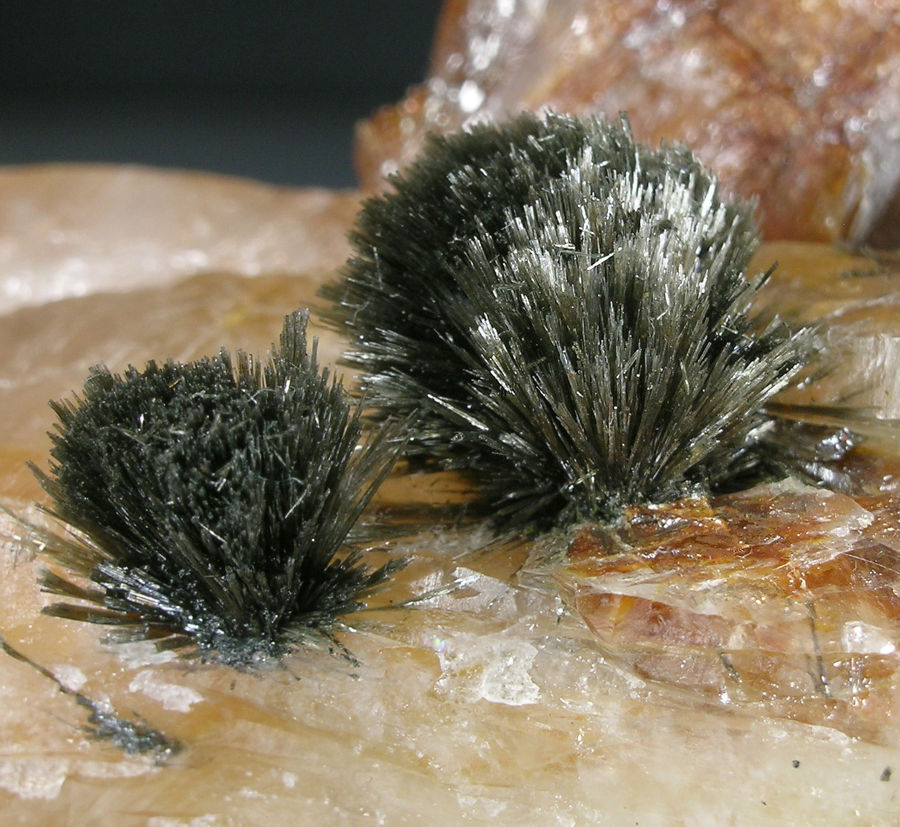
OXY-DRAVITE-1A |
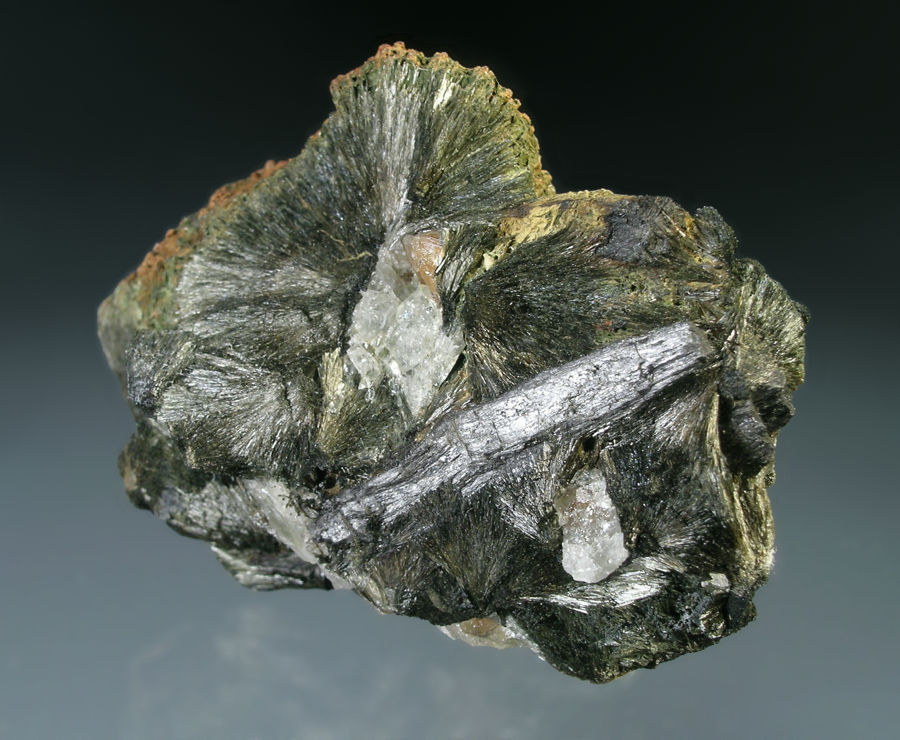
STIBNITE with OXY-DRAVITE-1A |
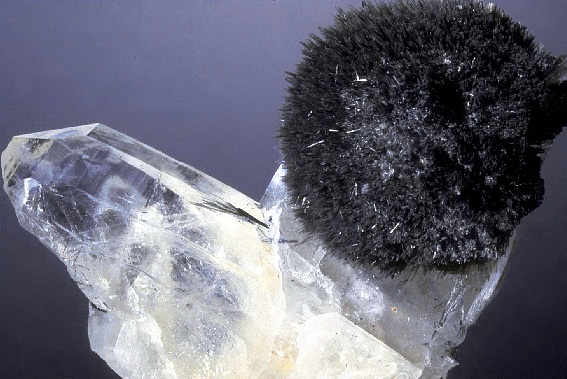
QUARTZ (Japan-law twin) OXY-DRAVITE-1A |
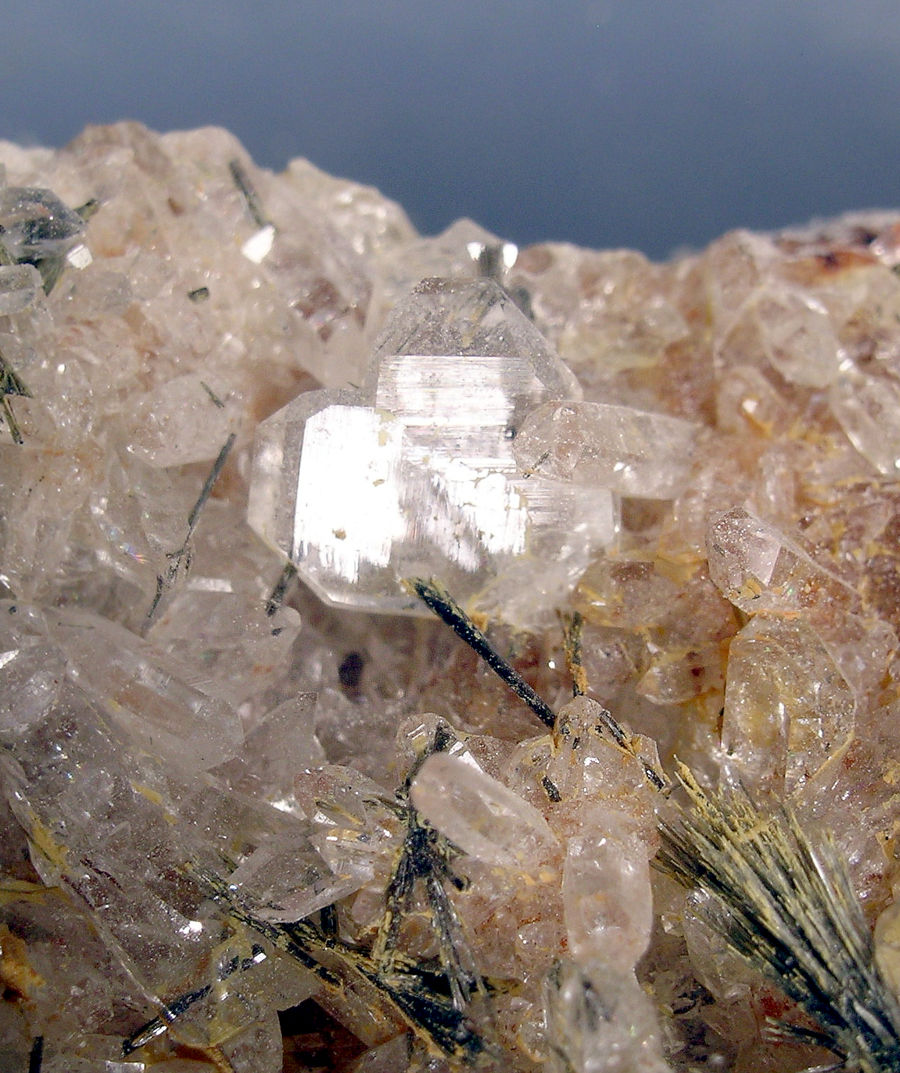
QUARTZ\(Japan-law twin) OXY-DRAVITE-1A |
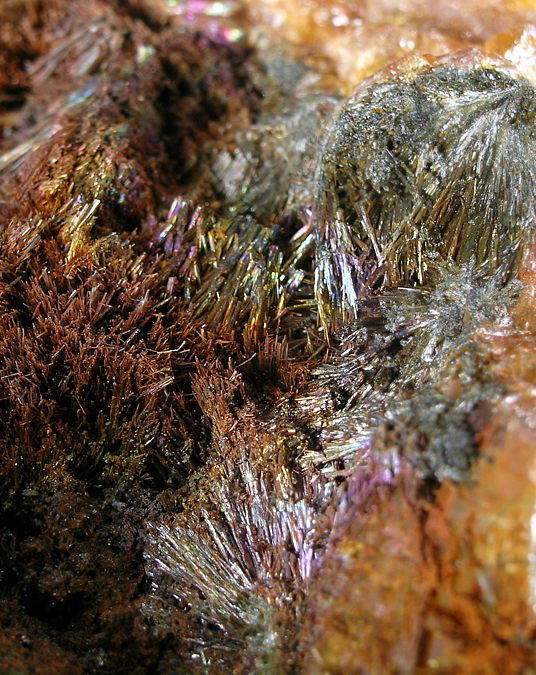
GOETHITE coating OXY-DRAVITE-1A |
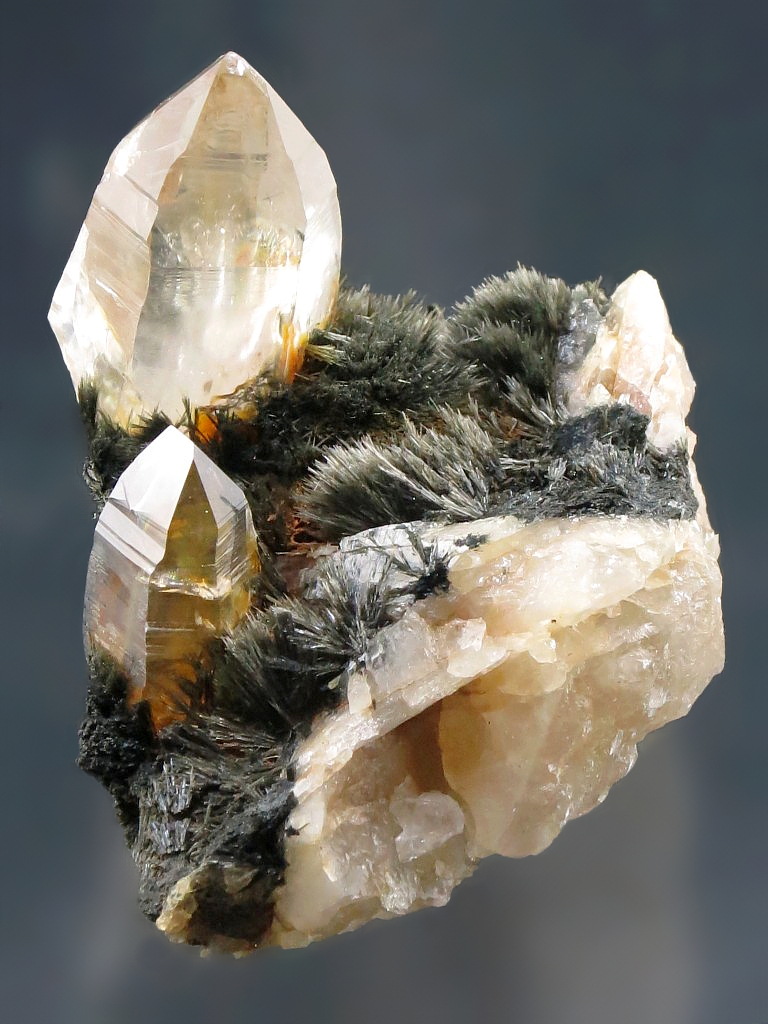
QUARTZ, OXY-DRAVITE-1A |
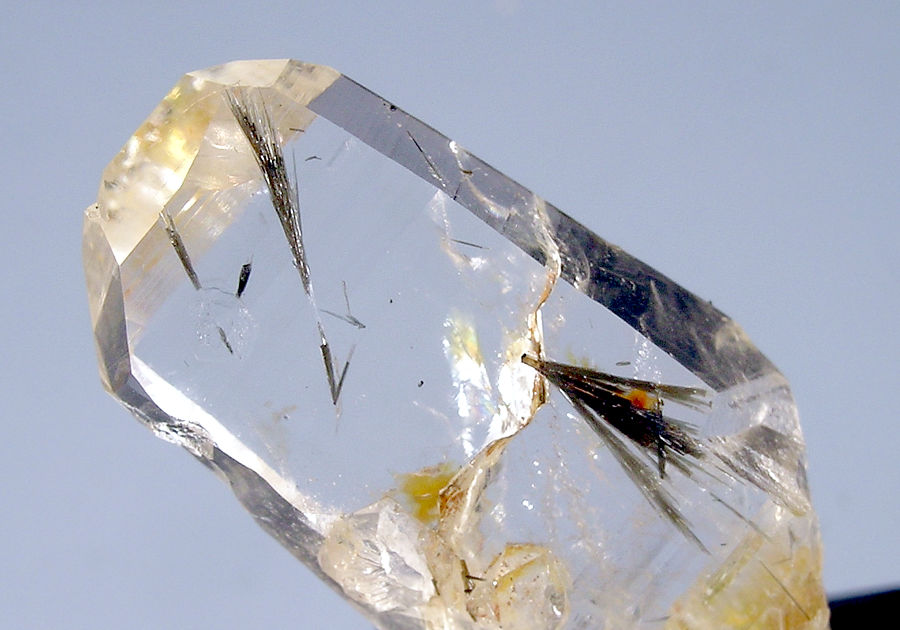
QUARTZ, OXY-DRAVITE-1A |
